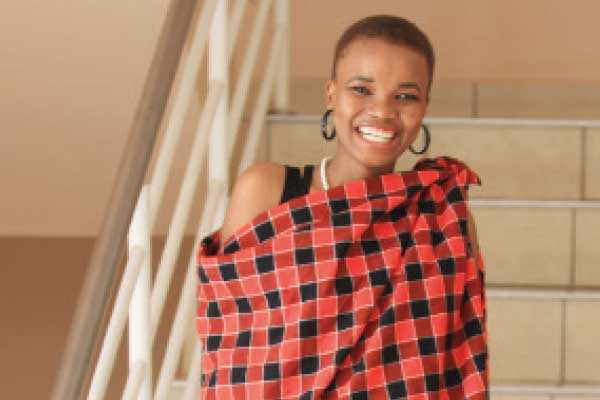Fascinated by Maasai people
The African blanket, commonly known as the Maasai shuka is a traditional wear associated with the Maasai people of East Africa. These blankets are strong, durable, friendly to the skin and very colourful.
These shukas are usually worn by the Maasai morans (young Maasai warriors) and this helps in telling them apart from all of the other communities. Recently when I travelled to Kenya, I got to learn a lot about this amazing piece of cloth and the intriguing culture of Maasai people in general. Maasai men wear these blankets with pride as they walk around the capital city, Nairobi. One of them, Elliot Naeku said: “As Maasai people, we are very much rooted when it comes to our culture. I wear this blanket almost every day because I’m a warrior. Nothing scares me. I’m a man. I’m a lion!” The Maasai identity is often defined by colourful beaded necklaces, and an iron rod (historically used as a weapon). While red is the most common colour, the Maasai also use blue, striped, and checkered cloth to wrap around their bodies.
“Red for us symbolises our bravery. We are lions,” Naeku said. History informs that the Maasai people of East Africa live in southern Kenya and northern Tanzania along the Great Rift Valley on semi-arid and arid lands. They occupy a total land area of 160,000 square kilometers with a population of approximately one half million people. However, many Maasai see the national census as government meddling and often miscount their numbers to census takers.
The Maasai society is comprised of sixteen sections (known in Maasai as Iloshon): Ildamat, Ilpurko, Ilkeekonyokie, Iloitai, Ilkaputiei, Ilkankere, Isiria, Ilmoitanik, Iloodokilani, Iloitokitoki, Ilarusa, Ilmatatapato, Ilwuasinkishu, Kore, Parakuyu, and Ilkisonko, also known as Isikirari (Tanzania’s Maasai). There was also once Iltorobo section but was assimilated by other sections. A majority of the Maasai population lives in Kenya. Sections such as Isikirari, Parakuyu, Kore and Ilarusa lives in Tanganyika.
Tanzania does not conduct census based on ethnicity, which makes it difficult to estimate Maasai living in Tanzania. In the past, the Maasai were known to be living in kraals arranged in a circular fashion. The fence, according to Naeku, around the kraal is made of acacia thorns, which prevents lions from attacking the cattle. It is a man’s responsibility to fence the kraals while women construct houses. Traditionally, kraals are shared by an extended family. However, due to the new land management system in the Maasai region, it is not uncommon to see a kraal occupied by a single family.
The Maasai do not wear the exact same clothes, but there are a few common traits. For example, most Maasai wear the colour red because it symbolizes their culture and they believe it scares away lions. Women wear clothes that are colourful and decorated with beads. They also wear capes. I spotted them at Ngorongoro market where they sell various Maasai items. Men, women and children all wear their hair in different ways. Women and children keep their hair shaved or very short. Warriors wear their hair in braids that are dyed red.
The Maasai are famous for their beaded jewellery. Men wear beaded bands on their wrists, ankles, waists and necks. However, due to the changing times and popularity of Maasai shuka, lots of people are embracing the shuka and making use of it in order to meet their diverse needs. As such, you can use it for dress up so as to look at the Masai morans…it always makes an excellent traditional attire!Or you can simply use it to make various other attractive items as well as use it in other areas within or around your home. It hence can make a perfect picnic mat, a bed-cover or curtains. You may as well make several scarves out of it, pillows and other fashion items.
Another enthralling lesson about the Maasai is that they are known to be formidable, strong warriors who hunt for food in the wild savannah and live closely with wild animals. Naeku says that they have many restrictions about relationships with other people. For example, a daughter cannot watch her father eat. Also, the young warriors must listen to the elders’ advice.
“Even though everybody is considered equal within their age-set, we are still a patriarchal society. Men normally make decisions for the family. Even so, warriors respect their mothers and remain close to them,” he says. Even though the Maasai have cows, meat is not a staple of their diet. They believe that it is greedy to kill cows just for meat, except on special occasions. Instead, they puncture a hole in the cow’s neck every week, and they collect the blood in a gourd. The cow’s blood, mixed with cow’s milk, is the main part of the Maasai peoples’ diet. Not killing the cattle for meat means that the cow will be able to provide many meals, not just two or three. The Maasai might also eat vegetables, fat, honey and tree bark.






